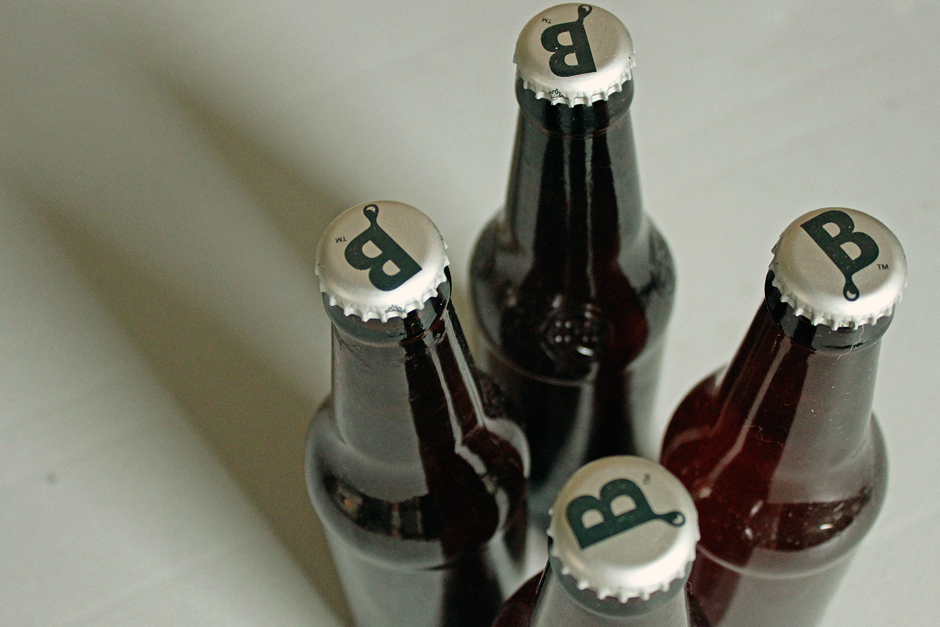I’ve officially had my first failure as a home brewer. It only took my second try to taste the bitter beer of defeat. In all honesty, I shouldn’t have even bottled it as I had questioned its progress just days after I racked it into the secondary. Ah yes, the secondary. I am going to go ahead and blame the secondary.
I’ve heard a lot of different opinions on using a secondary. Some say you should always use one for clarity to allow sediment to settle. Others say the only time you should use one is when you’re dry hopping or including an additive after primary. I decided to try it since brewing beer is all about experimenting.
Shortly after a successful first batch of an extract American Pale Ale, I rushed out and bought another Brewer’s Best kit for a Summer Ale. With my first kit, I went the quick route — two weeks primary then straight to bottles for a quick two week conditioning. It was good, but I wanted to try a secondary as my first batch did have some sediment and “floaters” with the occasional sour beer. I regretted it almost immediately. Minutes after racking the beer into the secondary, the wort started to turn dark from the top of the secondary then slowly down. I am almost positive my secondary (a five gallon glass carboy) allowed for too much oxygen to come in contact with the wort, causing it to oxidize.

As the days passed, the wort got darker and darker. My fears were confirmed two weeks later when I racked it into my bottling bucket and sampled a bit; skunk-o-rama. I decided to bottle a case worth just in case and dumped the rest. More time passed and I cracked one open. Nope, still skunk. Perhaps I didn’t sanitize the secondary enough? Could be, but as a candidate for OCD and being an insanely methodical person, that didn’t seem to be the culprit, although possible. I am sticking with oxidation. Despite the turn out, I must say, that was some damn clear and sediment free beer.
It didn’t take long for me to get back on the brewing horse though. Days later, I purchased a Pumpkin Spice Porter from Brew Camp. I went with three weeks primary then into bottles which are now conditioning in my closet. I cracked one open this weekend to test and it’s pretty darn good. It might be a bit over carbonated which, at the early stages of my home brewing experience and with using extract kits, I’m not 100% sure how to regulate such a variable.
I think I’ll steer clear of secondary fermenters until I get a better idea of when, why and what type I should use. If I do decide to use one again, I may give the three gallon “Better Bottle” plastic carboy a try as I’ve read that you need a smaller vessel in order to avoid oxidation. Trial and error seems to be part of the game. At this point, I’ve got endless amounts to learn about home brewing and so far, it’s been very fun and rewarding figuring out what works, what doesn’t and listening to the advice of others.

No worries Girl. I’ve had a few bad batches myself. Sometimes due to yeast, others due to poor temperature control. The skunking and off color sounds like light was getting to the carboy. Oxidation could be the culprit too. Although oxidation smells more like wet paper. Either way, I’m happy to hear you are getting back into it! Like you said, it’s all about trial and error!
Cheers!
”
I cracked one open this weekend to test and it’s pretty darn good. It might be a bit over carbonated which, at the early stages of my home brewing experience and with using extract kits, I’m not 100% sure how to regulate such a variable.
”
… priming sugar amount.
If you’re doing kits then a bag of a certain weight is given to you and you’re just supposed to toss it in like they say.
I use different amounts for every style:
Overly Hopped beers = 2oz.
More medium-hopped beers = 2.5oz.
Stout / Barley Wine / Higher ABV stuff = 3oz.
I also agree that your skunking most likely didn’t come from oxygenation, though I could be wrong.
I don’t use secondaries unless I dry-hop (and by dry-hop I mean putting the beer on ANYTHING; Hops / Cinnamon Sticks / Oak Chips / etc.).
I also agitate my batches every two days during primary – but that’s a different story.
Sorry to hear about your bad beer. I once had a batch in the summer that got way too hot and then green and fuzzy.
I’ve always used a secondary and never had a problem though. I made a cyser this past fall and I actually racked it a third time and let it set there for a month. As long as the glass is clean you can let it sit in there for a long time with the air lock on. I’ve head of winemakers leaving wine in the glass carboy for a very long time.